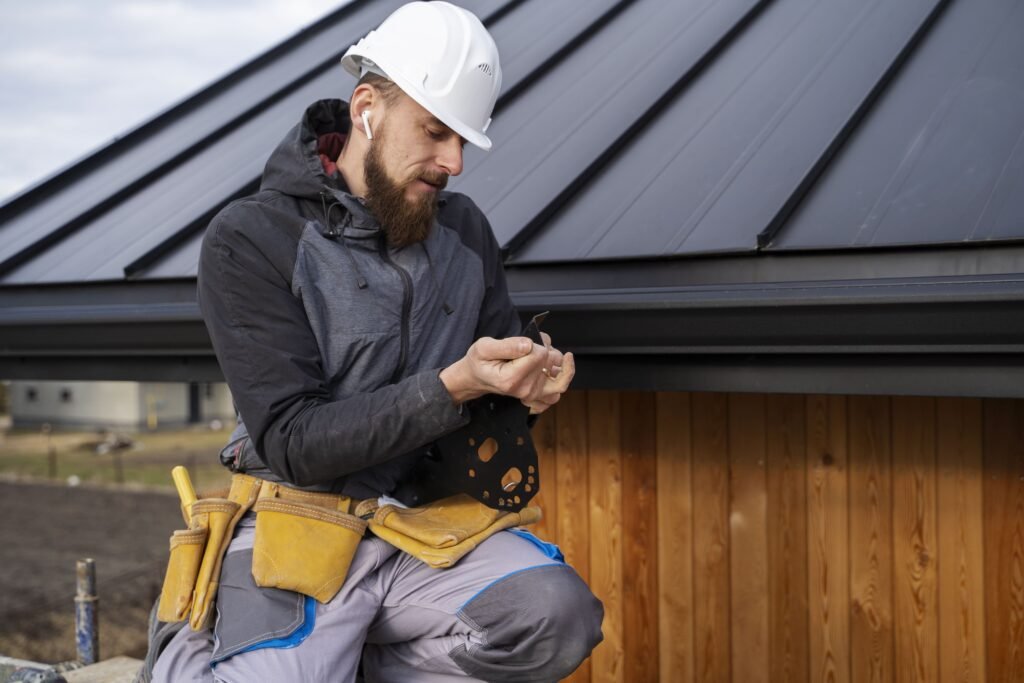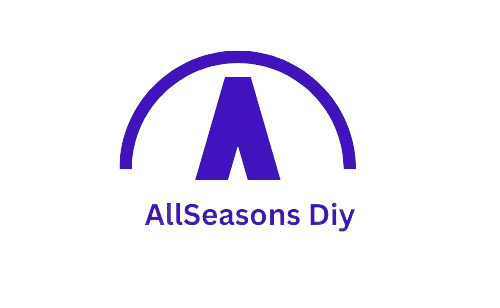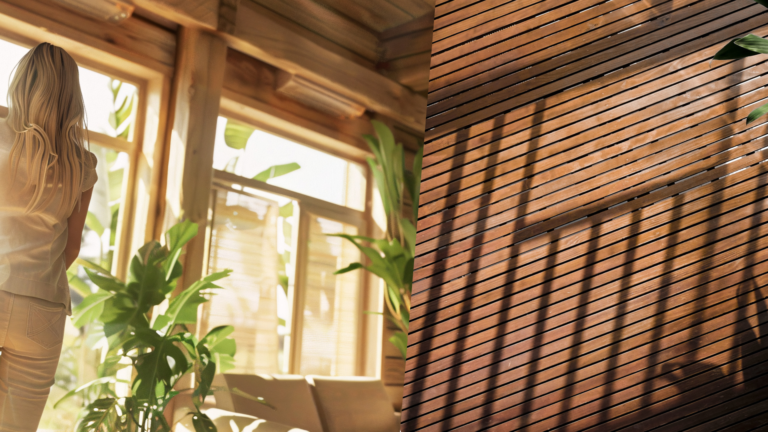How To Check For Roof Leaks?
Knowing that you leak in your roof can be disappointing, but early discovery may keep you from sustaining severe damage and paying for costly repairs. Checking for leaks in the roof is, therefore, part and parcel of home maintenance for the long life of your roof and the safety of the house. This guide takes you through how to check your roof for leaks using practical tips and easy instructions. Knowing how to inspect your roof for leaks is an important ability for homeowners who know what to look for, whether it’s a slight drip or you feel the issue is much larger. From checking the attic to reviewing the outside, this comprehensive guide offers all the information to notice potential issues and get them fixed in no time.
What are the Common Signs of Roof Leaks?
By recognizing the general symptoms of roof leakage, one can prevent oneself from experiencing significant damage and expensive repairs. One of the most evident symptoms is water stains on your ceiling or wall that usually appear as discolored patches or streaks. These stains might have a color variation, depending on the severity and duration of the leak: from light yellow to dark brown. Another problem pointing to a possible leak in the roof is the peeling of paint and blisters or bubbles on the wall surfaces. When moisture penetrates the structure of your house, the paint may lose adhesion, thus presenting such visual defects. Another sign will be the growth of mold and mildew with a musty smell. Mold thrives in damp environments; its presence indoors, however, more often signifies water intrusion. There might be some wet insulation that degrades in effect at some point in your attic. You may also see wood which is darker than materials that are surrounding or has signs of rotting due to long-term exposure to water. At times, one can even find small puddles or wet spots on the floor of the attic. Another piece of evidence you could find is damage on the exterior of your roof. That said, missing, damaged, or curling shingles make areas on your roof vulnerable to the penetration of water. Pay attention to roof flashing, as well as sealants near the vent, chimney, and skylight, when you notice their deterioration or damage, to prevent water penetration through your roof. By recognizing these common signs, you can take swift action to locate and address roof leaks before they cause more significant problems.
Preliminary Checks
Before you get into a fine inspection, it is good to do initial checks to rule out probable causes of a roof leak. This way, you have the direction toward which your check-up should be conducted, ensuring you do not miss out on details.
Begin on the Inside
Start your inspection inside your house. Try to evaluate your ceilings and walls for visual indications of water damage, such as water stains, peeled paint, or mold growth. Be particularly attentive in areas around light fixtures and vents, since water commonly travels down through these areas. If you see these signs, it’s a leak from the roof and the water is moving down through your home.
Attic Inspection
Take your flashlight and head up to the attic. Look for insulation that looks darker or wet, darker wood, or any evidence of mold. All these are obvious signs that water is penetrating your roof. Check your attic floor for puddles or moist areas. During the day, shut off the attic light and look for any rays of light showing through the roof. Even small pinholes of light can be an indicator of gaps or holes in your roof.
Check Roof History
Take into account the age and history of your roof. Older roofs are more susceptible to leaks as time eats away at them. In some cases, if your roof has been repaired or parts of it reinstalled recently, it may be best to begin inspecting in those areas. Poor workmanship or materials in renovations can bring leaks about. Past maintenance records will also give you a hint of previous recurring problems.
Impact Weather
Think about the recent weather in the context of heavy rain, snow, or high wind storms, which can intensify existing problems or cause new ones. If you’ve recently had a storm, this could explain a new roof leak. Jot down specific events that may coincide with the discovery of water damage on the inside of your home.
Exterior Walkaround
Finally, take a brief walk around the outside of your house. Check for obvious shingle damage: cracks, curling, or missing parts. Check for shingles that have fallen or debris that appears to have originated from the roof scattered on the ground. Different sections of roofs meet at certain points where leaks typically occur. All these preliminary checks give you a lot of information to guide your closer inspection and usually will help you identify the source of any leak very quickly.
Step-by-Step Guide to Checking for Roof Leaks

Finding and fixing leaky roofs can sometimes be a process of elimination, so you don’t miss a possible source of trouble. Use this step-by-step guide to make a thorough inspection of your roof and do what’s necessary.
- Get Your Tools:
Before getting started, gather essential tools: a flashlight, ladder, binoculars, garden hose, notepad, pencil, and a camera. You may also need safety equipment like gloves and a harness if you plan to climb onto the roof. - Check the Attic:
Begin your detailed inspection of the attic. Use a flashlight to check the rafters, roof decking, and insulation for signs of moisture, mold, or water stains. Look for dark spots or swollen wood. If you find wet insulation, replace it to prevent mold growth. - Check the Interior:
Examine your home for watermarks, peeling paint, or any other signs of water damage. Pay special attention to ceilings and walls, as leaks often start here. Not all locations where you find damage; will be useful for your exterior inspection. - Do an Outside Roof Check:
Use binoculars to inspect the roof from the ground. Look for missing, cracked, or curled shingles. Pay special attention to the roof valleys, as these are common spots for leaks. If it’s safe and you have the equipment, climb onto the roof for a closer look. - Inspect Flashing and Sealants:
Look at the flashing around chimneys, vents, skylights, and other roof penetrations. Damaged or loose flashing allows water to seep into your home. Ensure all sealants are in place and not cracked or deteriorating. Reapply sealant if needed to prevent leaks. - Roof Valley and Gutter Inspection:
Roof valleys are V-shaped channels where two roof planes meet. These areas can collect debris that traps water and leads to leaks. Clear these areas and check for damage. Inspect gutters and downspouts to ensure they are clean and properly draining water away from your roof. - Hose Down the Roof:
If you haven’t found the leak source, simulate rain by using a hose on the roof. Start by spraying the lowest section and gradually work your way up, section by section. Have someone inside the house watch for water intrusion. This can help you pinpoint the leak’s source. - Record What You Find:
Take notes and photos of any damage or potential problem areas. This documentation will be helpful if you decide to hire a professional or need to reference specific spots for repairs. - Make Minor Repairs:
For minor issues like small gaps or damaged shingles, you can attempt to fix them yourself. Replace missing shingles, reseal flashing, and apply roof patching material. Ensure all repairs are done correctly to prevent further leaks. - Know When to Call a Professional:
If you encounter extensive damage, structural problems, or leaks you cannot locate, it’s time to call a roofing professional. They have the expertise and tools to diagnose and repair complex roof problems safely and effectively.
Following this step-by-step guide will help you conduct a thorough inspection of your roof and address any leaks before they lead to significant damage. Regular maintenance and timely repairs will extend the life of your roof and keep your home safe from the elements.
Common Roof Leak Sources
Understanding some common sources of roof leaks can help you focus your inspection efforts in the right area and fix issues faster. Here are some of the most common culprits:
- Missing or Damaged Shingles:
Shingles are your roof’s barrier against the weather. If they’re missing, cracked, or damaged, rainwater can easily seep through to the layers underneath. Severe weather like heavy winds or hail can dislodge or damage shingles, making them a common source of leaks. - Flashing Issues:
Flashing seals and protects areas where the roof joins with chimneys, vents, and skylights. Over time, flashing can become loose, corroded, or cracked, letting water into your home. Improperly fitted flashing is also a frequent cause of leaks. - Roof Valleys:
Roof valleys, where two roof planes meet, channel a lot of water during rainstorms. If the valley isn’t properly sealed or if it collects debris, water can pool and eventually seep into your home. - Clogged or Broken Gutters and Downspouts:
When gutters and downspouts are clogged or damaged, rainwater gets stuck on the roof instead of being directed away from the house. As the water has no way to drain, it will pool on the roof, eventually seeping under the roof materials and into your home. - Skylights:
Skylights can become a source of leaks if not properly installed or maintained. The seal around the skylight can wear out over time, and the glass can crack, allowing water to enter. - Roof Vents:
Plumbing vents, exhaust fans, attic vents, and other roof vents may start leaking when their seals fail. The rubber boots sealing their base can crack or wear out, allowing water to get in. - Chimneys:
Chimneys are a common source of leaks. The flashing around the chimney can fail, or the mortar between the bricks can crack and let water in. The chimney cap may also get damaged or dislodged, contributing to leaks. - Ice Dams:
In colder climates, ice dams can build up along the roof edge, blocking the drainage of melting snow. This can allow water to pool beneath the shingles and seep into the house. Proper attic insulation and ventilation can help prevent ice dams. - Aging Roof:
As roofs age, the materials start to deteriorate, making them more prone to leaks. Shingles may lose granules, become brittle, or curl, and other components like flashing and sealants can degrade over time. Regular maintenance and timely replacement of aging roofs are crucial to preventing leaks.
By focusing on these common sources, you can more effectively identify and address roof leaks. Regular inspections and maintenance will help keep your roof in good condition and protect your home from water damage.
Preventive Measures
Keep your roof healthy to avoid leaks and expensive fixes! Here’s how:
- Check your roof twice a year: Look inside your attic and outside on the roof for any problems, especially after bad storms.
- Clean your gutters: Don’t let leaves and twigs clog the gutters! This can make water back up and leak under your roof.
- Trim tree branches: Keep branches away from your roof. Falling branches can damage the shingles, and leaves can clog the gutters.
- Seal around vents and pipes: The areas where vents, pipes, and chimneys meet your roof need special attention. Make sure the seals are good and not cracked or broken. Fix them if needed.
- Replace broken shingles: If any shingles are missing, cracked, or damaged, replace them right away. Damaged shingles can let water leak through.
- Insulate your attic and add vents: This helps keep the temperature even in your attic and prevents moisture buildup that can cause leaks.
- Think about a drip edge: This is a metal piece that goes along the edge of your roof and helps direct water away from the walls.
- Get a professional to check your roof sometimes: A roofer can find problems you might miss and give advice on how to fix them.
- Fix small problems quickly: Don’t wait to fix a small leak or damaged shingle. A small problem can become a big one if you ignore it.
- Maybe add a roof coating: This is like waterproof paint for your roof and can help prevent leaks.
By following these tips, you can help prevent leaks and keep your roof strong for many years. Taking care of your roof now saves you money on repairs later!
Conclusion: How To Check For Roof Leaks?
Catching roof leaks early saves you money and trouble! Here’s how to be a roof detective:
- Learn the signs: Look for things like water stains on ceilings, wet spots in your attic, or missing shingles.
- Do a quick check: Look at your roof from the ground for any obvious damage. You can also climb up for a closer look if you feel safe doing so.
- Follow a guide (optional): There are online guides that can walk you through a more detailed inspection.
- Know where leaks come from Common culprits are damaged shingles, clogged gutters, and areas around vents and pipes.
- Prevent leaks: Regularly check your roof, clean your gutters, and make sure the seals around vents and pipes are good.
By taking care of your roof, you can keep your home dry and safe for you and your family. It’s like giving your roof a check-up to avoid bigger problems later!
FAQs
What are the first signs of a roof leak I should look for?
Look for water stains on ceilings or walls, peeling paint, mold growth, and a musty odor in your home. In the attic, check for damp insulation, darkened wood, and visible water stains.
How often should I check my roof for leaks?
It’s recommended to inspect your roof at least twice a year, in the spring and fall. Additionally, check your roof after severe weather events, such as heavy rain, windstorms, or hail.
Can I inspect my roof for leaks myself, or should I hire a professional?
You can perform a basic inspection yourself, especially for visible signs like missing shingles or water stains. However, for a thorough inspection or if you suspect significant damage, it’s best to hire a professional roofer.
What tools do I need to check roof leaks?
You’ll need a flashlight, ladder, binoculars, garden hose, notepad, and a camera. Safety equipment like gloves and a harness is also recommended if you plan to climb onto the roof.







